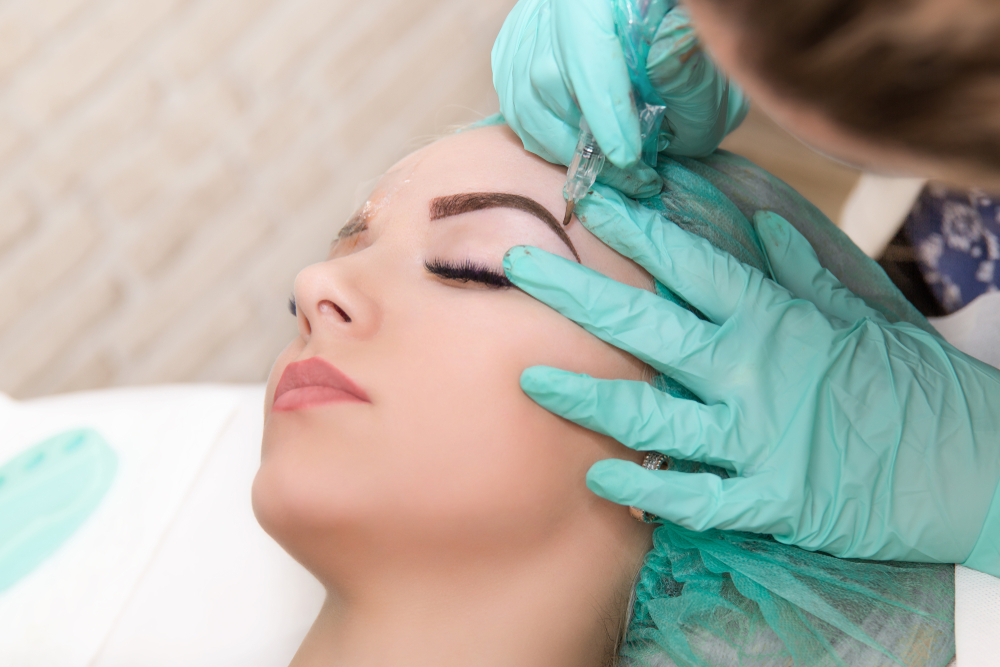Can Microblading Cause Allergic Reactions?
Microblading has become a popular beauty trend, offering a semi-permanent solution to achieve well-defined and fuller eyebrows. However, as with any cosmetic procedure, it is important to consider the potential risks, including the possibility of allergic reactions. In this blog, we will explore whether microblading can cause allergic reactions, what symptoms to look out for, and how to minimize risks.
Understanding Microblading
Microblading is a cosmetic tattooing technique where a technician uses a handheld tool to implant pigment into the skin. This process creates hair-like strokes that mimic the appearance of natural eyebrow hairs, resulting in a fuller and more defined look. The effects can last from 12 to 18 months, depending on various factors like skin type, lifestyle, and aftercare.
Common Ingredients in Microblading Pigments
The pigments used in microblading are typically composed of a combination of natural and synthetic ingredients, including:
- Iron Oxides: Commonly used for their stability and longevity.
- Titanium Dioxide: Used to lighten and adjust the pigment color.
- Glycerin: Acts as a base to help the pigment glide smoothly during application.
Potential Allergic Reactions
Causes of Allergic Reactions
Allergic reactions to microblading pigments are relatively rare but can occur. The most common causes of allergic reactions include:
- Pigment Ingredients: Certain ingredients in the pigments, such as iron oxides or synthetic dyes, can trigger allergic reactions in some individuals.
- Numbing Agents: The numbing cream applied before the procedure may also contain ingredients that can cause allergies.
- Aftercare Products: Lotions or ointments recommended for aftercare may cause irritation or allergic reactions.
Symptoms of Allergic Reactions
If you are allergic to any of the components used in microblading, you may experience symptoms such as:
- Redness and Swelling: Persistent redness and swelling around the eyebrow area.
- Itching and Rash: Intense itching or the development of a rash.
- Blisters: Formation of small blisters or bumps.
- Prolonged Irritation: Discomfort and irritation that do not subside within the expected healing period.

Minimizing the Risk of Allergic Reactions
Pre-Procedure Patch Test
One of the most effective ways to minimize the risk of an allergic reaction is to request a patch test before the procedure. During a patch test, a small amount of pigment is applied to your skin, usually behind your ear or on your inner arm, to see if you develop any adverse reactions.
Choosing the Right Technician
Selecting a qualified and experienced technician is crucial. A reputable technician will use high-quality pigments and follow strict hygiene standards. They will also be knowledgeable about potential allergens and how to mitigate risks.
Disclose Allergies and Sensitivities
Before undergoing microblading, make sure to disclose any known allergies or skin sensitivities to your technician. This information will help them choose the most appropriate products and techniques for your skin type.
Follow Aftercare Instructions
Proper aftercare is essential to minimize the risk of infections and allergic reactions. Follow your technician’s aftercare instructions carefully, including:
- Keeping the area clean and dry.
- Avoiding excessive sun exposure and sweating.
- Applying recommended aftercare products as instructed.
What to Do If You Experience an Allergic Reaction
Immediate Steps
If you suspect you are having an allergic reaction to microblading, take the following steps:
- Stop Using Aftercare Products: Discontinue any lotions or ointments you are using.
- Clean the Area: Gently clean the affected area with water and a mild, fragrance-free soap.
- Apply a Cold Compress: Use a cold compress to reduce swelling and soothe irritation.
Seek Medical Attention
If the reaction is severe or persists, seek medical attention immediately. A healthcare professional can prescribe appropriate treatments, such as antihistamines or topical steroids, to alleviate symptoms.
Conclusion
While microblading can potentially cause allergic reactions, such instances are rare and can often be prevented with proper precautions. By choosing a reputable technician, requesting a patch test, and following aftercare instructions, you can minimize the risk and enjoy the benefits of beautifully enhanced eyebrows.
For those considering microblading, it’s important to do thorough research and consult with professionals to ensure a safe and satisfying experience. If you’re interested in learning more or booking a microblading session, visit our official booking page.
External Links
- Healthline: Microblading Risks: Detailed information on microblading risks and precautions.
- WebMD: Allergic Reactions: Comprehensive guide on allergic reactions and management.


